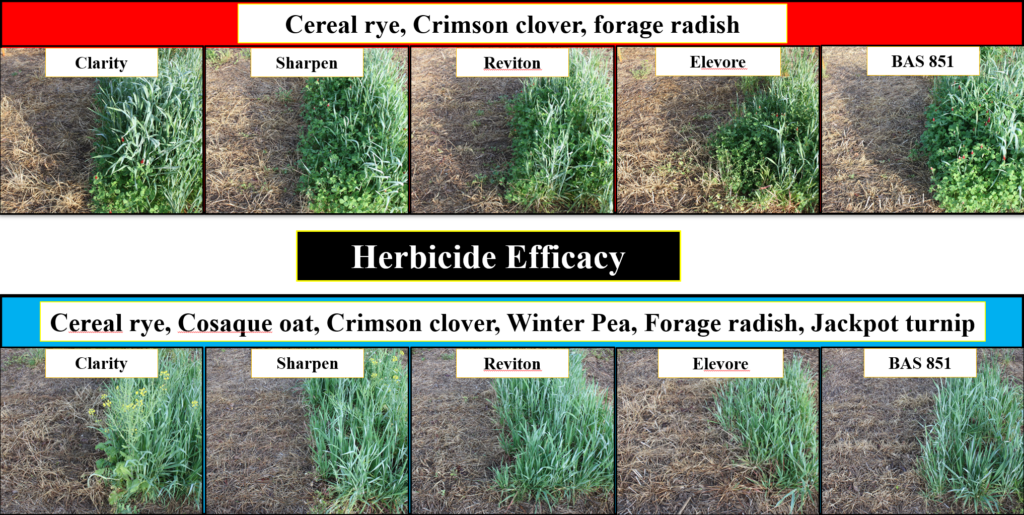Burndown time has come and gone for many in Tennessee. However, for those utilizing cover crops in their production system, many acres have yet to be terminated. Here are a few thoughts and strategies for effectively terminating cover crops as we prepare for Plant 25.
Cover crops are grown for a variety of reasons and the individual species or multi-species blends chosen reflect the desired goal of a cover crop system. However, as an agronomist, I primarily focus on the cash crop and “reverse engineer” my strategies surrounding cover crops with that goal in mind.
As such, proper cover crop termination is where my mind is today and has been for the past few weeks as I target specific planting windows for corn and soybean in the coming weeks.
While there are multiple ways to terminate a cover crop prior to (or just before) spring planting, chemical termination with herbicides is the most widely used in Tennessee and my overall preferred method. With this in mind, I’ll list a few factors that help me make my termination decisions each spring.
- Timing
Cover crop termination timing is an important decision to make. As an agronomist, I prefer a burndown timing of at least 4 weeks pre-plant. Under certain scenarios, 3-weeks is sufficient. Conversely, if a cover crop was planted in early October, was well-established, and is being terminated in April, it may take 6-weeks to fully desiccate due to the amount of biomass present at the time of termination. Winter fallow-ground is a slightly different story, and I am speaking specifically about terminating cover crops.
- Herbicide Selection
Depending on what species you are terminating, seeding rate, and biomass present at application, herbicide efficacy can vary substantially. When a cover crop mix contains a cereal, legume, and a brassica, as many mixes do, a single mode of action may be inadequate to control all species in a mix. Furthermore, if terminated in mid-late March, the speed of herbicide activity will slow down due to a reduction in plant metabolism (growth) during this time. Dr. Larry Steckel (UT Extension Weed Specialist) is fond of saying that “the cheapest thing we can put in our sprayer to enhance herbicide efficacy is water”, (referring specifically to applications of glufosinate/Liberty). In this case, I am going to say something similar: “The cheapest thing we can put in the tank for terminating cover crops is time.” Time is your friend. Allowing a herbicide 4-6 weeks of time prior to planting will allow it to do its job. In many cases, herbicide options increase when we allow them sufficient time to desiccate the cover crop.
- Spring Cash Crop
What crop will this field be planted with in the spring? As burn-down time approaches your target planting date, pay attention to pre-plant intervals with PPO herbicides such as saflufenacil (Sharpen), tiafenacil (Reviton), and others. In our trials, these products do a wonderful job terminating cover crops when applied with 32 fl. oz. of RoundUP PowerMAX 3. Allowing 4 – 6 weeks of burndown time will decrease the restrictions on which products you can safely use across corn, soybean, and cotton acres. It will also result in a more complete kill prior to planting.
Other Comments
It is no secret I like an early burndown time for cover crops prior to planting. This will have an effect on the biomass present from the cover and any potential n-credits associated with legume species. However, terminating well in advance of planting mitigates other risks such as early-season insect pressure. In nearly all circumstances, seed treatments pay. They are especially necessary if you are planting “green” into a cover crop or as your burndown and planting dates get progressively closer together.
Good News
When given 4 – 6 weeks of herbicidal activity, there are multiple herbicide options that effectively terminate cover crops, from single species all the way up to 6-way blends. Above are a set of pictures from our work terminating cover crops in an early season production system (ESPS) for soybean. Planted on October 31 and terminated on March 20, Clarity, Sharpen, Reviton, Elevore, and an experimental from BASF all performed well on both 3-way mixes and a 6-way mix. Each application included 32 fl. oz. of RoundUP PowerMAX 3.


